Sugar-free Berry yoghurt ice cream (with Stevia)
Sugar-free ice cream that still tastes sweet – does it really work?

Sugar – pure, white and deadly? As some would put it, refined sugar provides no fibers, no minerals, no proteins, no fats, no enzymes … only empty, even dangerous, calories and metabolic hazards
Regardless of whether you consider refined sugar to be a poison, it seems quite clear that sugar can be a rather scary substance. Consuming large quantities of sugar is simply not good for us, even if we do not (yet) suffer from diabetes.
Still, it is not so easy to stay away from sugar. Increasingly, sugar has found its way into many of the things we tend to eat and drink these days – and I am not only talking about desserts. Also, many products marketed as healthier and less fattening – such as many commercial frozen yoghurts – often balance reduced fat with increased sugar.
And the many different types of sugar that exist does not really help either – if you have issues with ordinary white sugar, those issues usually applies also to all other types of refined sugars (such as corn syrup and other types of inverted sugar, brown sugars, raw sugars, and powdered/confectioner’s sugar).
So – what about alternative sweeteners to sugar?
The no-sugar sweetening alternatives
Given the growing concerns about sugar, there are a lot of different, alternative and artificial sweeteners around these days. But how healthy are they?
While some of these sweeteners even are purported to increase the risks of cancer and other diseases, some people also claim that the ‘alternative’ sweeteners general play the same detrimental tricks on the central neurological system as sugar does (thus maintaining negative phenomena like “sugar cravings”, “sugar spikes” and so forth).
But what if you really have to cut out “ordinary sugar”, for instance because of diabetes, but still long for ice cream?
I do not claim to be a guru on the intricacies of alternative sweeteners, but – all things considered – the so-called “natural” sweeteners do seem somewhat less potentially harmful than others. In this post, we will check how one of them – Stevia – is doing as an ice cream ingredient.
Stevia – the ‘natural’ alternative sweetener
One of the relatively new and “more natural” sweeteners is Stevia. Stevia is actually derived from a plant, and therefore not “artificial” in the same sense as so many other alternative sweeteners (such as Aspartame, for example). And while the Stevia plant (also known as “Sweet leaf” or “Sugar leaf”) and its sweetening effects have been known for a long, long time, the marketing of sweeteners based on Stevia is a relatively new phenomenon.
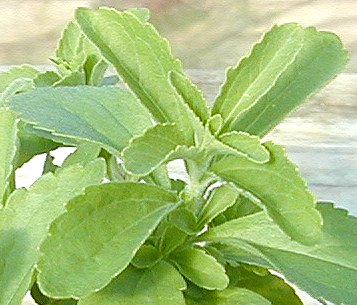
Stevia rebaudiana – the leaves are about 30 times sweeter than sugar; extracts about 300 times sweeter. Within the EU, Stevia is an approved food additive (E 960).
To add to the marketing confusion, however, pure Stevia extracts is something you probably have to go look for in a health shop or something like that.
In a supermarket, you are more likely to find products “based on” Stevia, i e products composed of, or derived by some Stevia, and (usually) a quantitatively larger amount of other stuff. One popular product in this latter category would be “Pure Via“.
Why so? Some would argue that this is mainly because ‘engineered and invented’ derivatives like Pure Via can be “owned”, whereas “natural products” – like pure Stevia – cannot. Leaving aside the sometimes rather fierce “Pure Stevia vs Stevia-derivates”-debate, however, I decided to test both types in one of my favourite quick summer favourites – the berry yoghurt ice cream.
Preparing the non-sugar ice cream
Obviously, when using alternative sweeteners, it is important to make sure that the dosage is appropriate: the respective conversion tables for the products involved need to be followed – keep that in mind when looking at the recipe below, and adjust according to the tables for your specific Stevia-product.
Pure Via (partly based on Stevia and then boosted in volume by the addition of rebiana and erythritol) provides convenient conversion – one teaspoon of Pure Via simply corresponds to the same amount of sugar.
Pure Stevia, on the other hand, is so sweet that less than half a gram corresponds to 120 gram of sugar. Luckily, my tub of pure Stevia came with a really small measuring spoon;-)
Preparing the ice cream
The ice cream is done in exactly the same way as usual, with the only exception that the sugar is replaced by the sweeteners.
You may recognise the recipe. It is the one used for my favourite raspberry yoghurt ice cream. To add some variety, however, I also decided to use another mix of berries this time, creating a Frutti di Bosco yoghurt ice cream (Italian for “Fruits of the forest” – or, more descriptively, “mixed berries”) . So, how would these two berry yoghurt ice creams turn out?
The final results
It is clear that both the Stevia sweeteners did their job – both ice creams came out appropriately sweet in both cases. And what about the taste? The family, acting as my test panel, reacted mostly positive: for those wishing to cut down on sugar but still enjoy some ice cream, Stevia might be a good solution.
That said, I must personally admit that I have some difficulties with the particular, somewhat metallic, after-taste left by most non-sugar based sweeteners … Stevia included. While both Stevia products left similar after-tastes (including a slight touch of bitterness, apparently typical for Stevia), the negative effect was somewhat less pronounced in the case of Pure Via (apparently also one of its selling points).
Still, for those who want to stay clear of ordinary sugar, both products would do the trick. For those like myself, feeling less enthusiastic about the typical “alternative ‘sweetener after-taste”, heavy masking flavours like chocolate might be a good working compromise.
As expected, none of the ice creams did well in the freezer – both types froze relatively solid after a few hours, which reflects the lack of “ordinary” sugar (being an important building block for the consistency/scoopability of ice cream). In other words – these ice creams should preferably be enjoyed fresh, or at least relatively soon after preparation! Or consider adding 1-2 tablespoons of neutral alcohol (Kirsch would also go well with the berries) to the base, which should prevent too solid freezing without affecting the flavour.
Hybrid sugar solutions to contemplate
One thing to consider for those who are open to use at least some “ordinary” sugar – Replace some (or most) of the ordinary sugar in the recipe with Stevia, but keep some ordinary sugar (possibly in the form of honey, Agave nectar or any similar inverted sugar).
I am not sure how much that would diminish any negative ‘alternative sweetener” after-tastes, but it could in any case possibly improve the consistency of the ice cream somewhat (as could the addition of some alcohol). This is something I may test during the summer.
- About 200 gram (about 2 cups) raspberries or mixed berries (fresh or frozen)
- 200 ml (about 0.8 cup) yoghurt
- 200 ml (about 0.8 cup) cream
- 1 tablespoon lemon juice
- The Stevia-equivalent of 125 ml (1/2 cup) sugar: In my case, about 10 tablespoons Pure Via OR 0.48 gram of pure Stevia
- (possibly, but contains sugar!) 1 tablespoon Agave nectar or honey
- (possibly – particularly if still-freezing in the freezer – About 1-2 tablespoon of neutral alcohol like vodka.
- Put all ingredients in a bowl, blend thoroughly, and purée with a mixer or equivalent.
- If needed, chill the blend in the refrigerator.
- Churn in your ice cream machine according to instructions, or still-freeze in your freezer
- If still-freezing, make sure to manually churn the freezing ice cream base thoroughly a few times while waiting for it to freeze fully. A good rule of thumb is to manually churn the base about every 45 minutes for three hours. If still-freezing, also consider adding 1-2 tablespoons of vodka or similar neutral alcohol to improve scoopability (the alcohol is not there to affect the flavour, but to make the consistency of the frozen ice cream somewhat softer!)
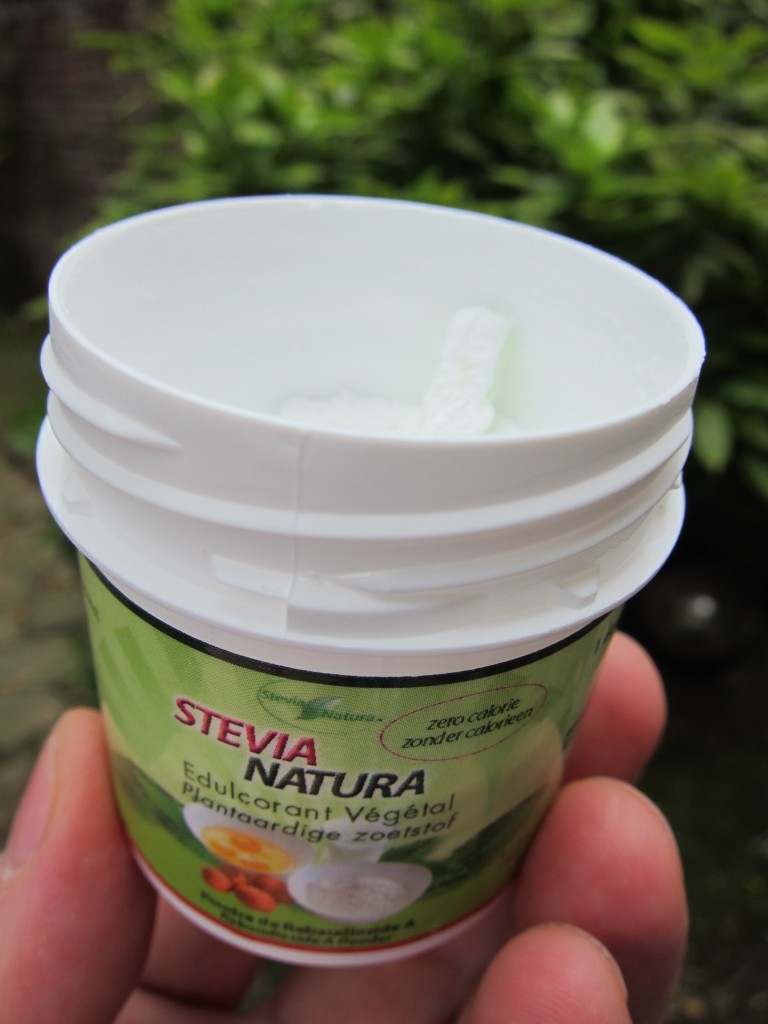
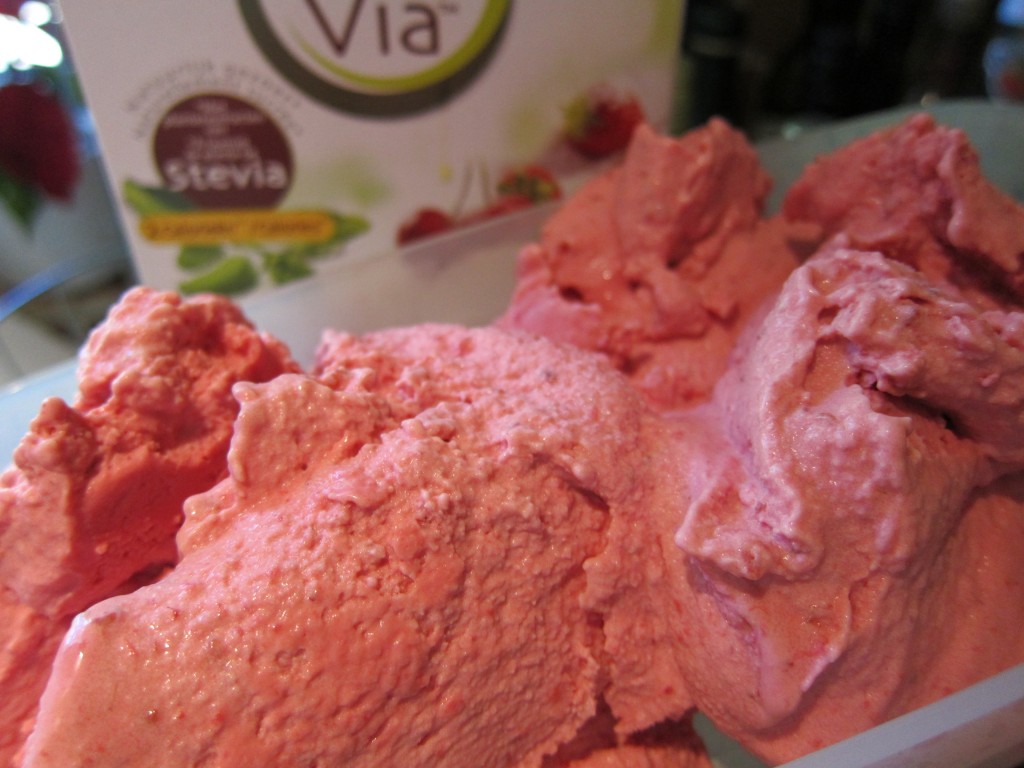
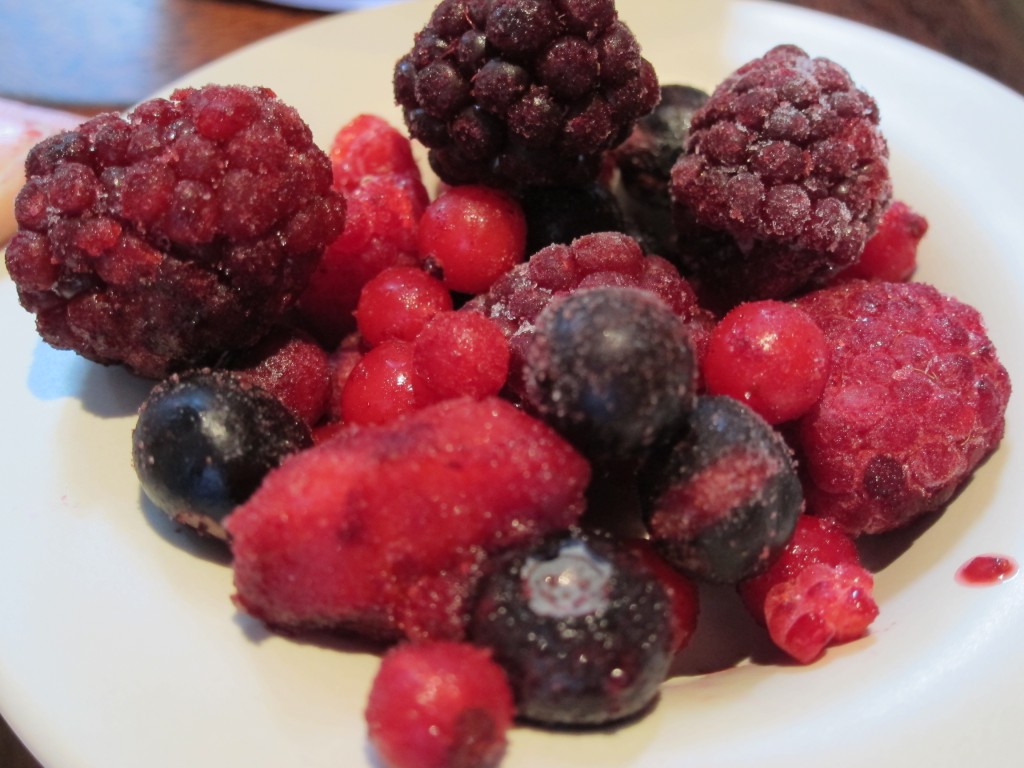
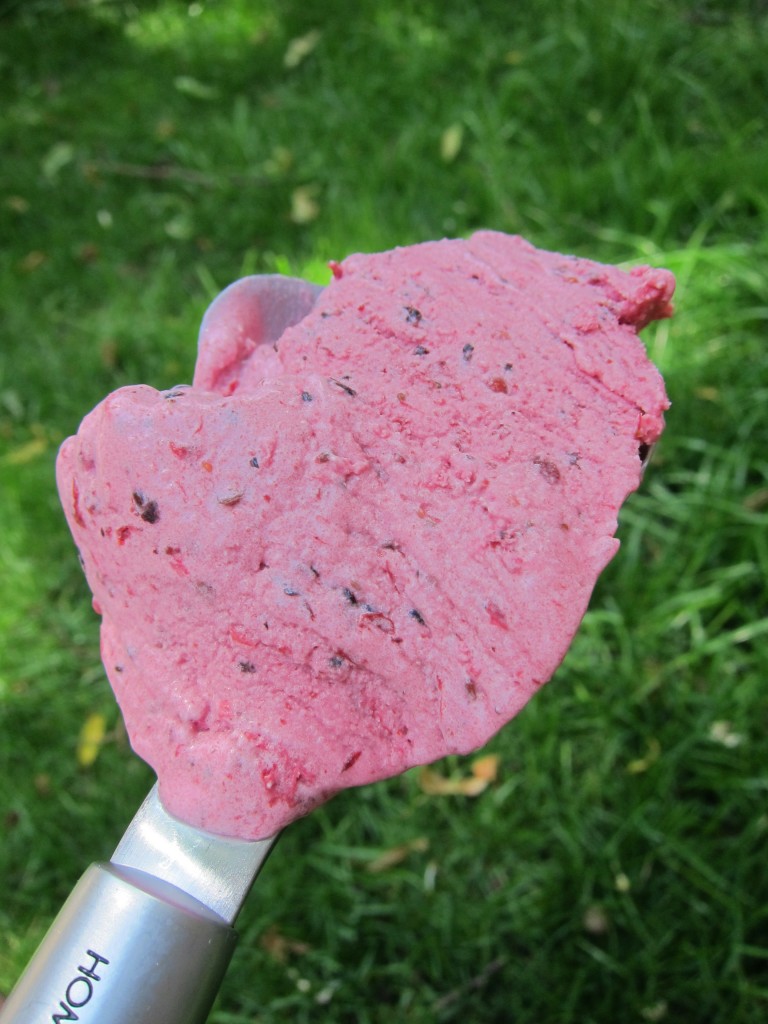
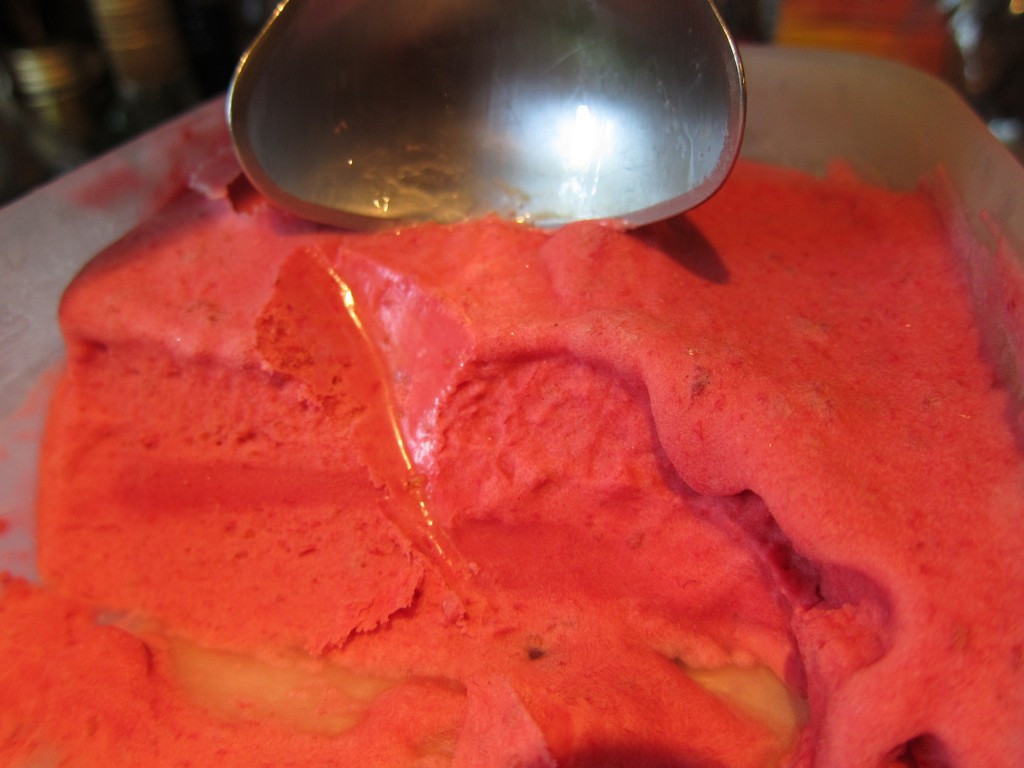
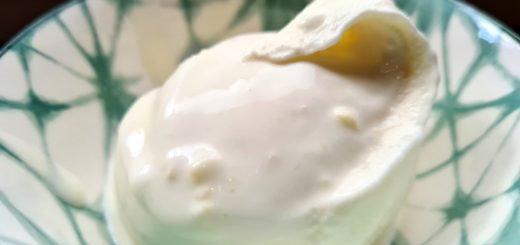
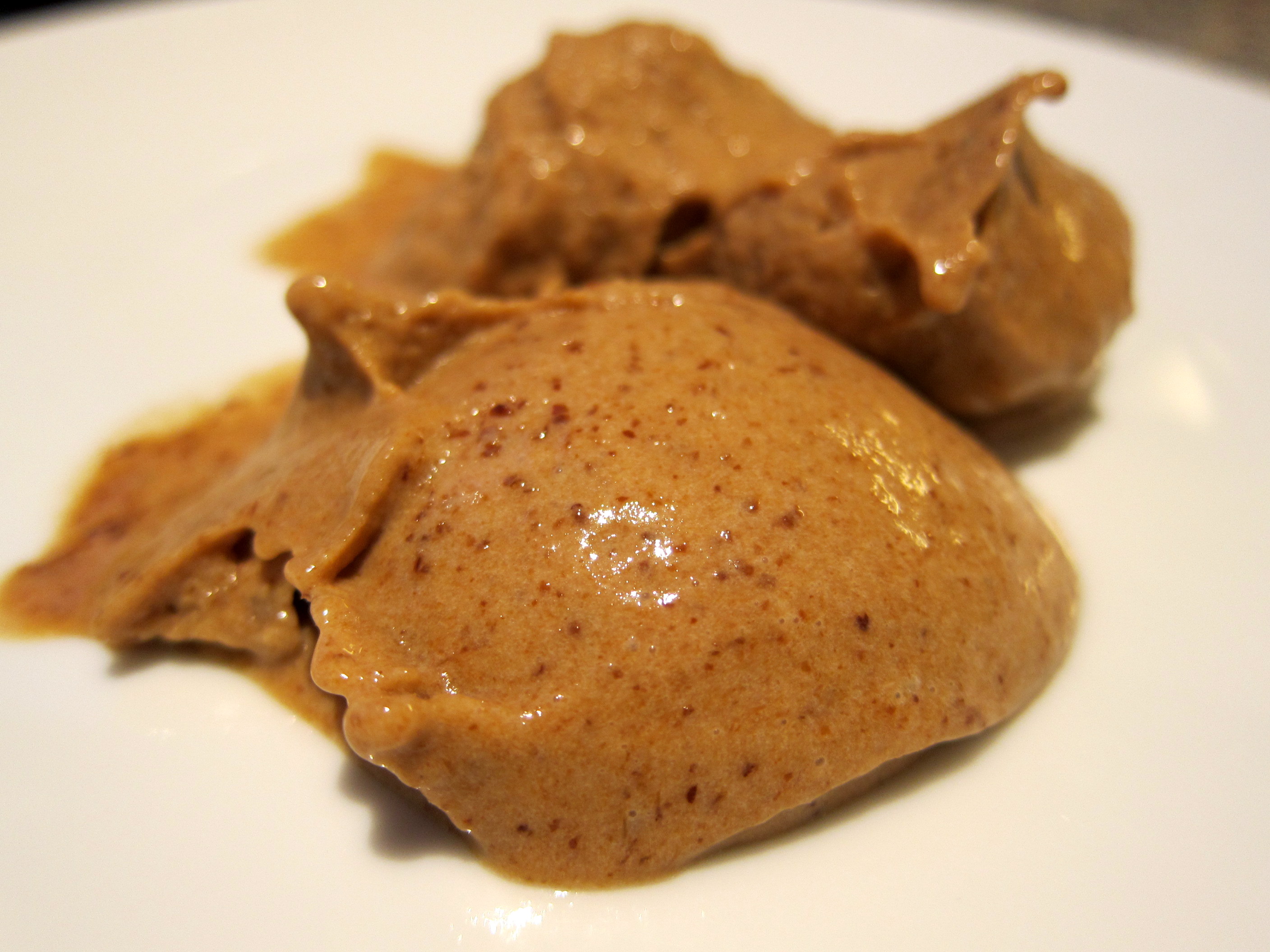
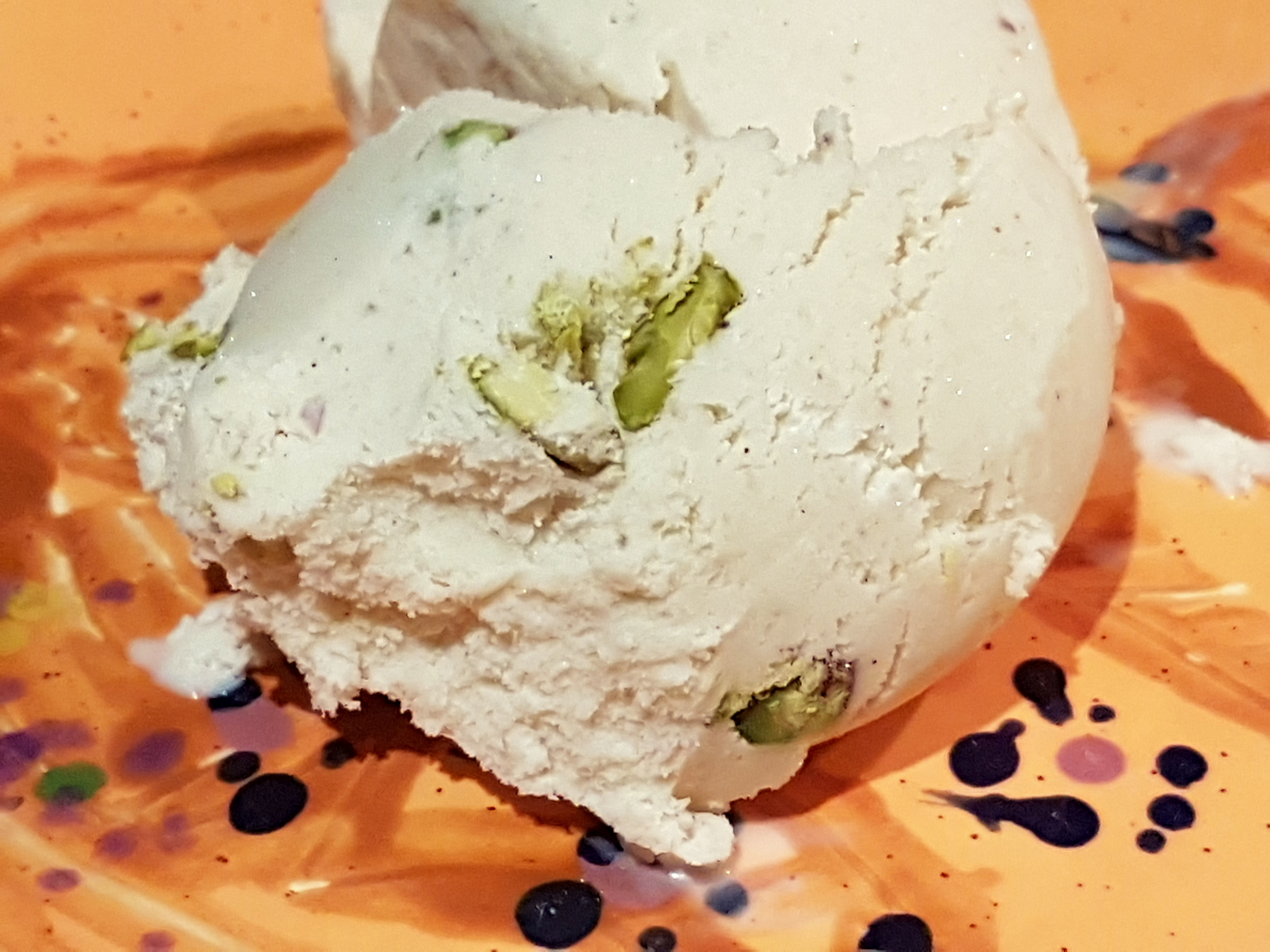


Well, I am ready for stevia experiment – but I have actually the plant. I plan to infuse the milk and cream with leaf, but very unsure about the result 🙂
Wow, exciting! Do let me know how it works out 🙂
It may also be worthwhile to use either guar gum or xanthan gum to give the ice cream a better consistancy. I know they are expensive – but you only need between 1/8 – 1/4 tsp to 1 litre of ice cream so they stretch a long way.
I have just bought an ice cream maker – my husband is pre-diabetic and I can’t eat eggs nor most starches and am lactose intolerant – so coming up with an ice cream recipe that we can both eat is quite a challenge 🙂
I would be careful about the alcohol because it is a form of pure sugar. I use unflavored gelatin